From coelacanths to crinoids: these 9 ‘living fossils’ haven’t changed in millions of years
While researching for my previous post, I came across this article in The Conversation which explains how and why some organisms appear to have remained unchanged for millions of years.
To creationist fools, inculcated to believe that the Theory of Evolution (TOE) says all organisms must change over time and is all about the fossil record, these apparent prolonged periods of morphological stability run counter to the TOE and so disprove it. To people so misled, these exceptions disprove the 'rule'.
But that is just what they are - exceptions - to the general tendency of organisms to respond to environmental changes by evolving to maintain their fitness to survive and reproduce in that environment. If their environment remains unchanged or fails to change in a way that is detrimental to their success, there is no pressure to change, especially morphologically. What we can't tell though is how much they change genetically, particularly in the non-coding areas of their DNA where changes are neutral.
Here then is a short list of 'living fossils' which, to those who understand the subject, are not a problem for evolutionary biology, though they are a problem for creationists who have to try to live with their favourite 'proof' that evolution is false involving organisms remaining unchanged for millions of years in a world which they believe is just a few thousand years old, and so shouldn't have fossils from millions of years ago.
The article is by Alice Clement, a Research Associate in the College of Science and Engineering, Flinders University. Her article is reprinted here under a Creative Commons license, reformatted for stylistic consistency:

From coelacanths to crinoids: these 9 ‘living fossils’ haven’t changed in millions of years
Shutterstock
We see evolution all around us, constantly, in every living thing. Yet in the deep oceans we find a number of “living fossils” reminiscent of creatures from prehistoric times.
In his 1859 book On the Origin of Species, esteemed naturalist Charles Darwin coined the term “living fossil” to describe living organisms that appeared unchanged from their extinct fossil relatives. The term has since been used to describe long-enduring lineages, relict populations, groups with low diversity, and groups with DNA that has hardly changed in millions of years.
The marine depths seem to be a good place for “living fossils”, with cartilaginous fish such as sharks and rays generally being 2-4 times more evolutionarily distinct than land animals. In other words, while every species is unique, these species are particularly unlike their closest relatives.
Let’s take a look at some of these relics from the past.
1. Coelacanth
Coelacanths are fish that live deep off the coasts of Africa and Indonesia. They have unusually shaped paired body fins which they move alternatively, almost as if they’re “walking” underwater. Their lineage stretches back to the Devonian Period, at least 410 million years ago.
It was once thought coelacanths had gone extinct alongside (non-bird) dinosaurs about 70 million years ago, as they disappear from the fossil record around this time.
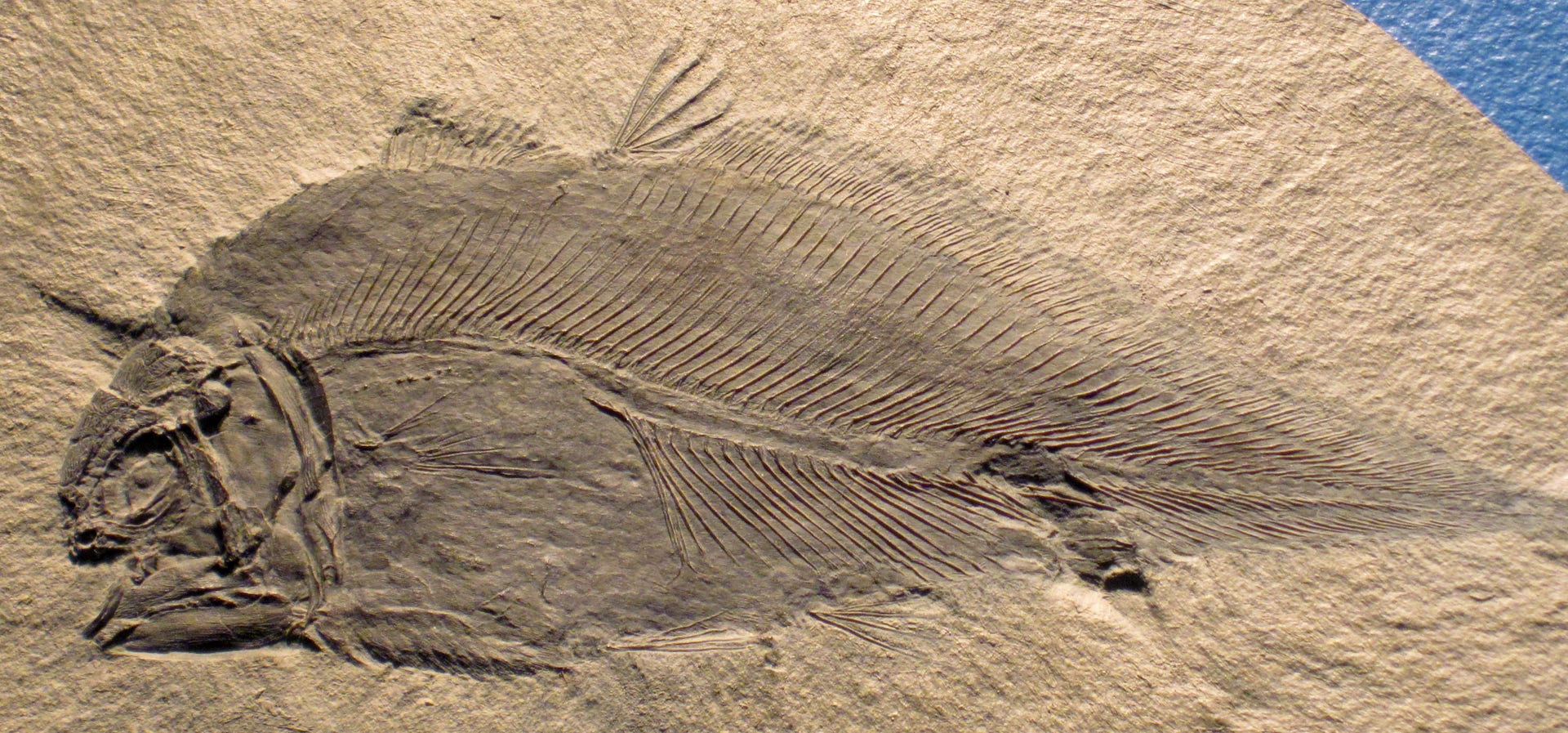
Allenypterus montanus, a fossil coelacanth fish from the Bear Gulch Limestone in Montana.
James St. John
Today there are two living coelacanth species, known as Latimeria, which have basically remained unchanged over the past 100 million years.
2. Horseshoe crab
Horseshoe crabs are ancient creatures that first appeared at least 480 million years ago during the Ordovician Period and don’t appear to have changed much since. They are not crabs at all, but “chelicerates” and therefore more closely related to spiders and sea scorpions.
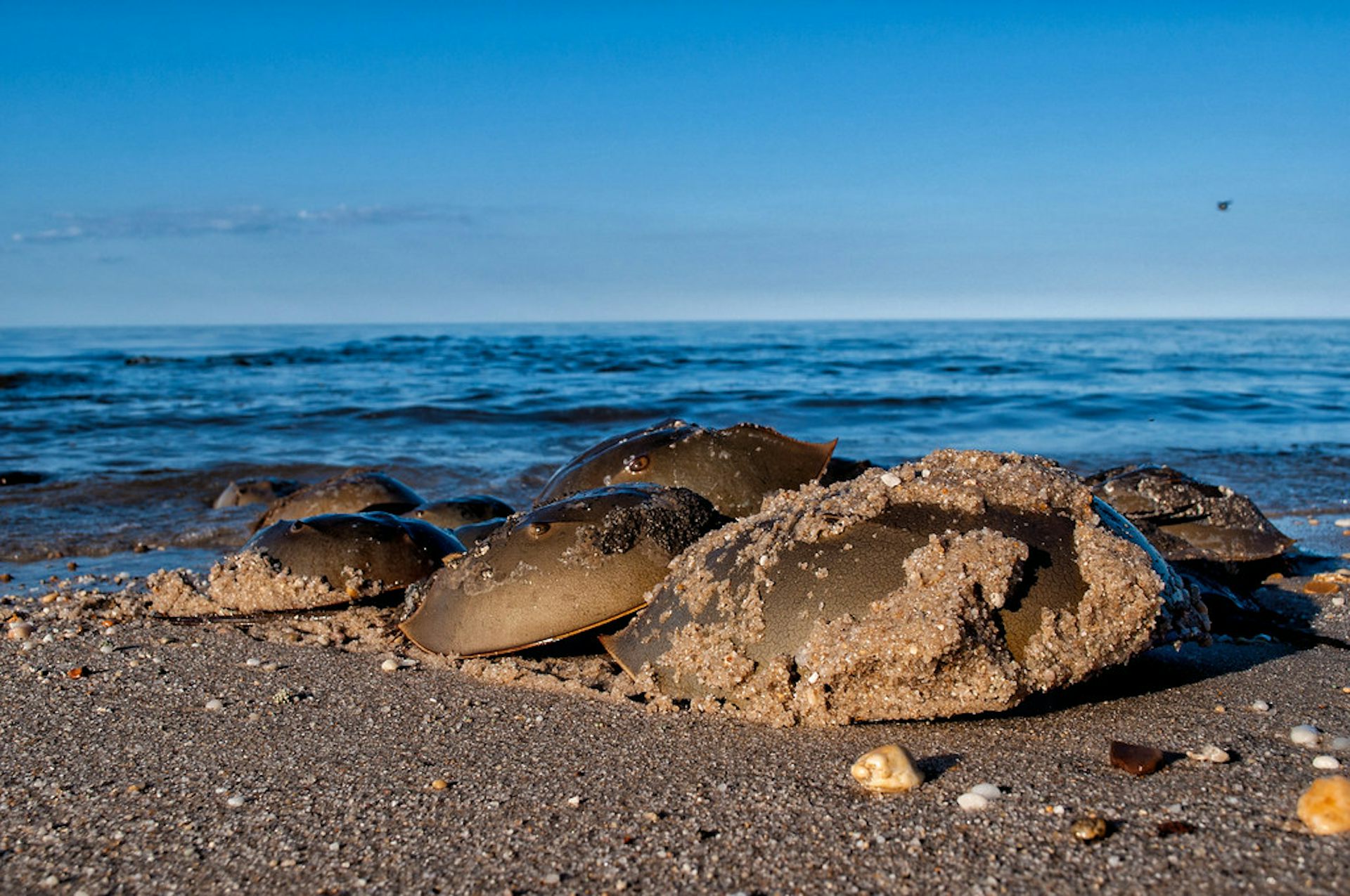
You can find Horseshoe crabs at Bowers Beach in Delaware.
Jeffrey
They also have strange blue blood, coloured that way due to a high copper content. Horseshoe crabs are harvested for their blood by the pharmaceutical industry since it has uses in biomedical testing.
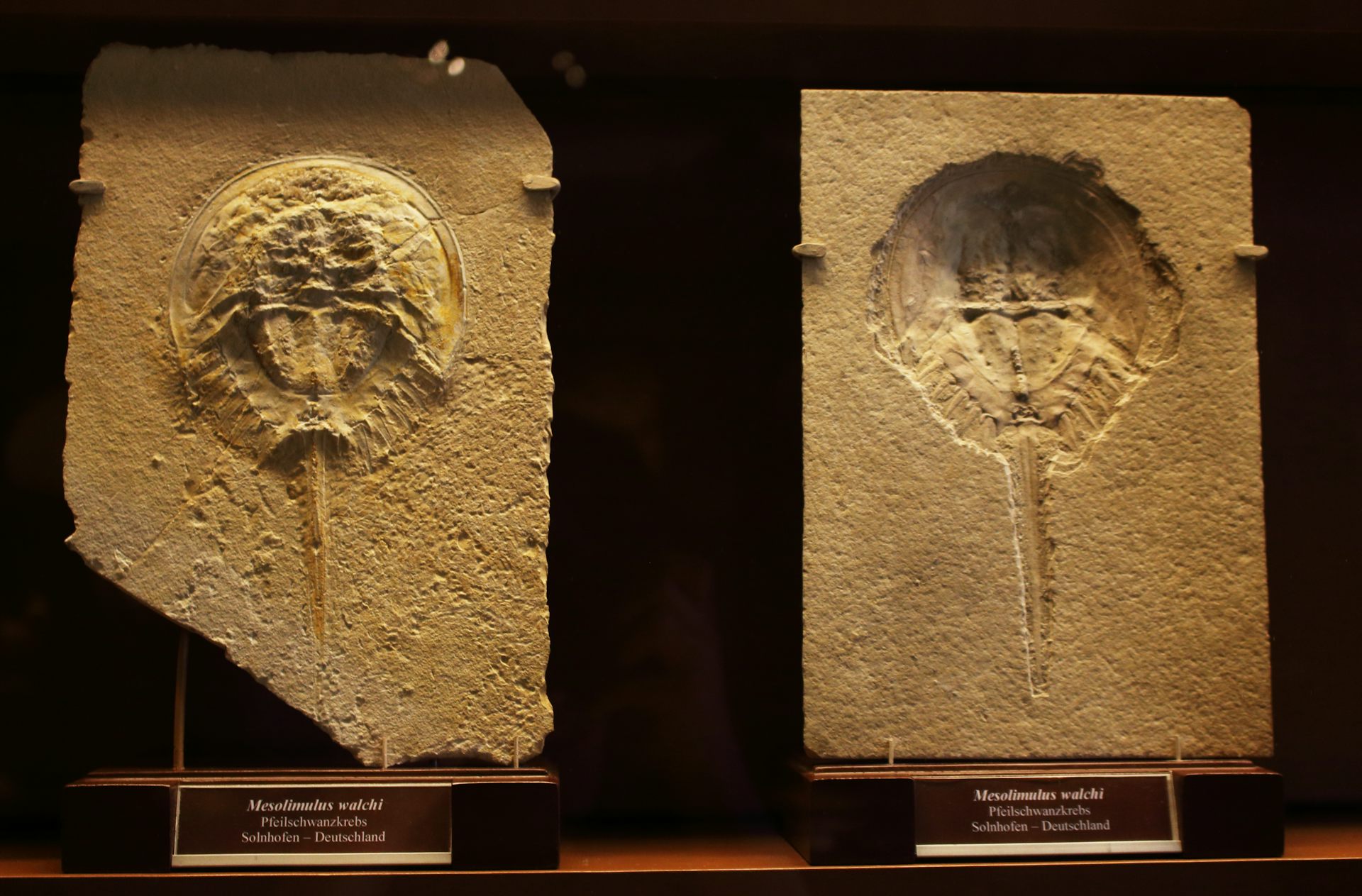
Mesolimulus walchi is an extinct species of horseshoe crab.
Petr Hykš
'Living fossils': we mapped half a billion years of horseshoe crabs to save them from blood harvests
3. Elephant sharkSimilar to horseshoe crabs, “elephant shark” (Callorhinchus milii) is a misnomer. This species, also known as the Australian ghost shark, is not a shark at all. It’s a related type of cartilaginous fish known as a “chimaera” and belongs to a subclass called Holocephali which diverged from the shark lineage more than 450 million years ago.
These “plownose” chimaeras take their name from their bizarrely shaped snout and can be found living off the continental shelves of Australia and New Zealand.
Analysis of their genome has shown the species changes at a veritable snail’s pace. In fact, it has the slowest evolving genome of all vertebrates, with its DNA almost imperceptibly altered over hundreds of millions of years.
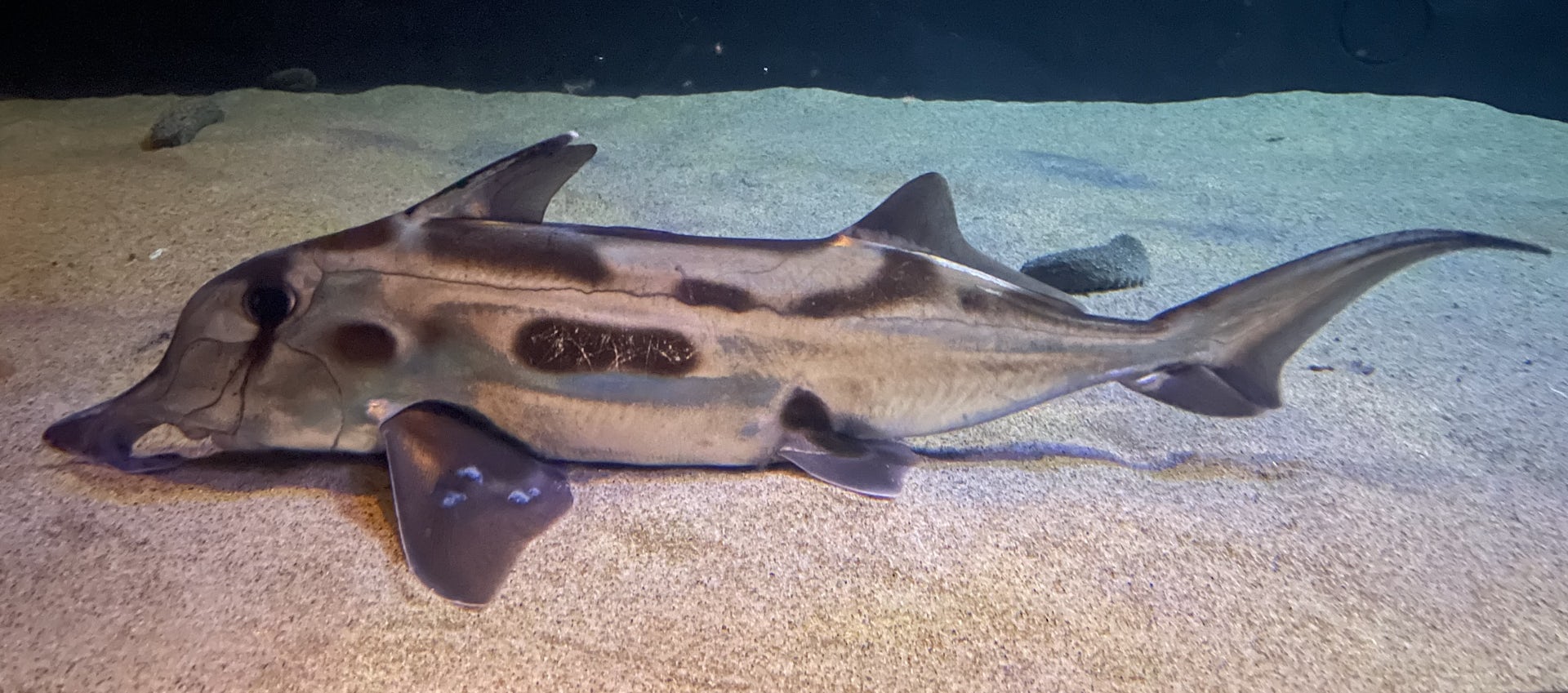
Callorhinchus milii is covered in distinct dark markings. It is commercially exploited in Australia.
Totti/Wikimedia
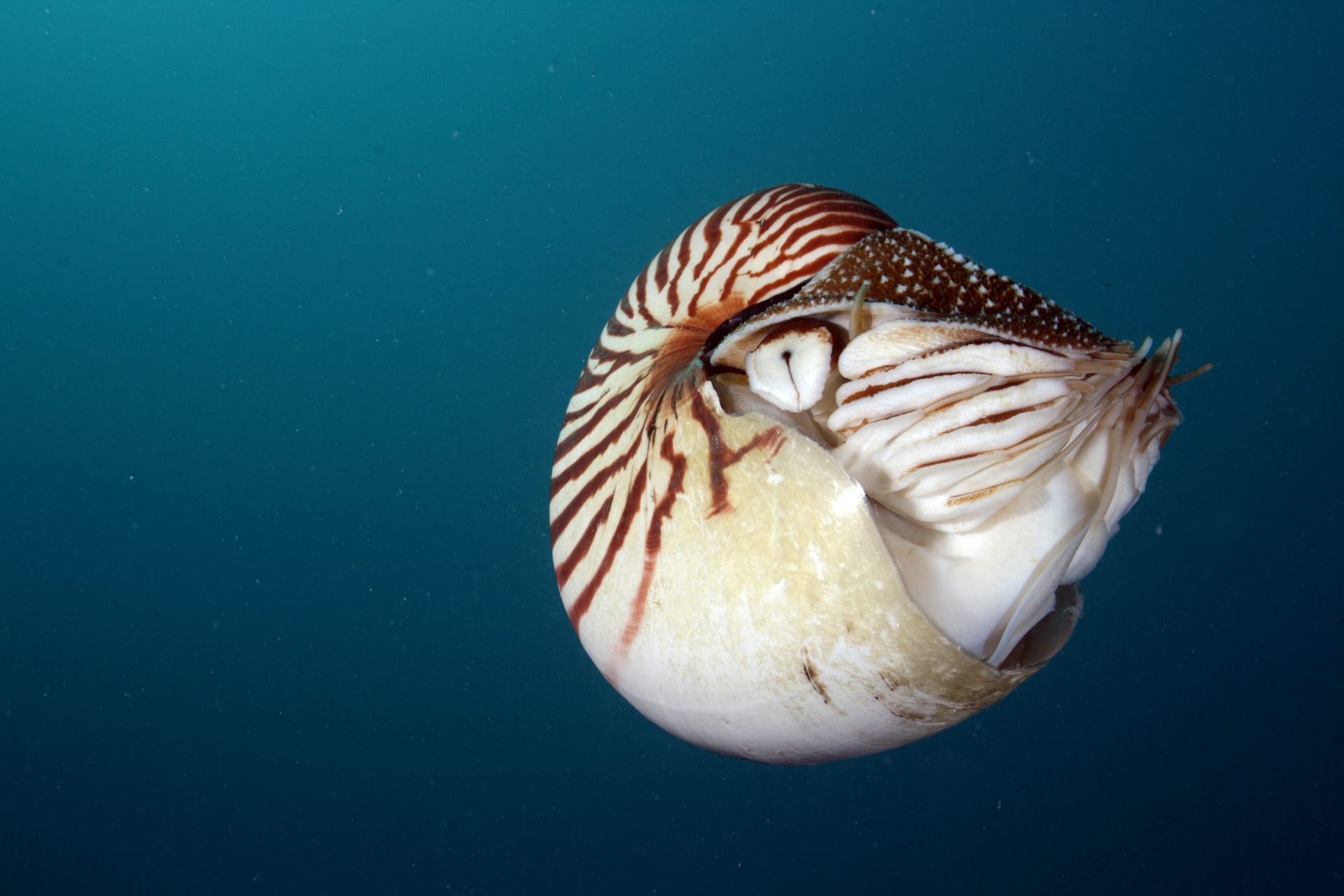
Nautilus live in the ‘pelagic’ zone, the large middle column of water that’s far from both the shore and ocean bottom.
PacificKlaus
Nautilus live in the open water in and around coral reefs in the Indo-Pacific Ocean. They’re hunted for their beautiful shells to make art and jewellery, but international trade is now regulated to protect them from over-exploitation.
Members of the Nautilidae family are known to have existed from the Late Triassic, and appear to have remained relatively unchanged for more than 200 million years. Darwin himself described these creatures as “living fossils”.
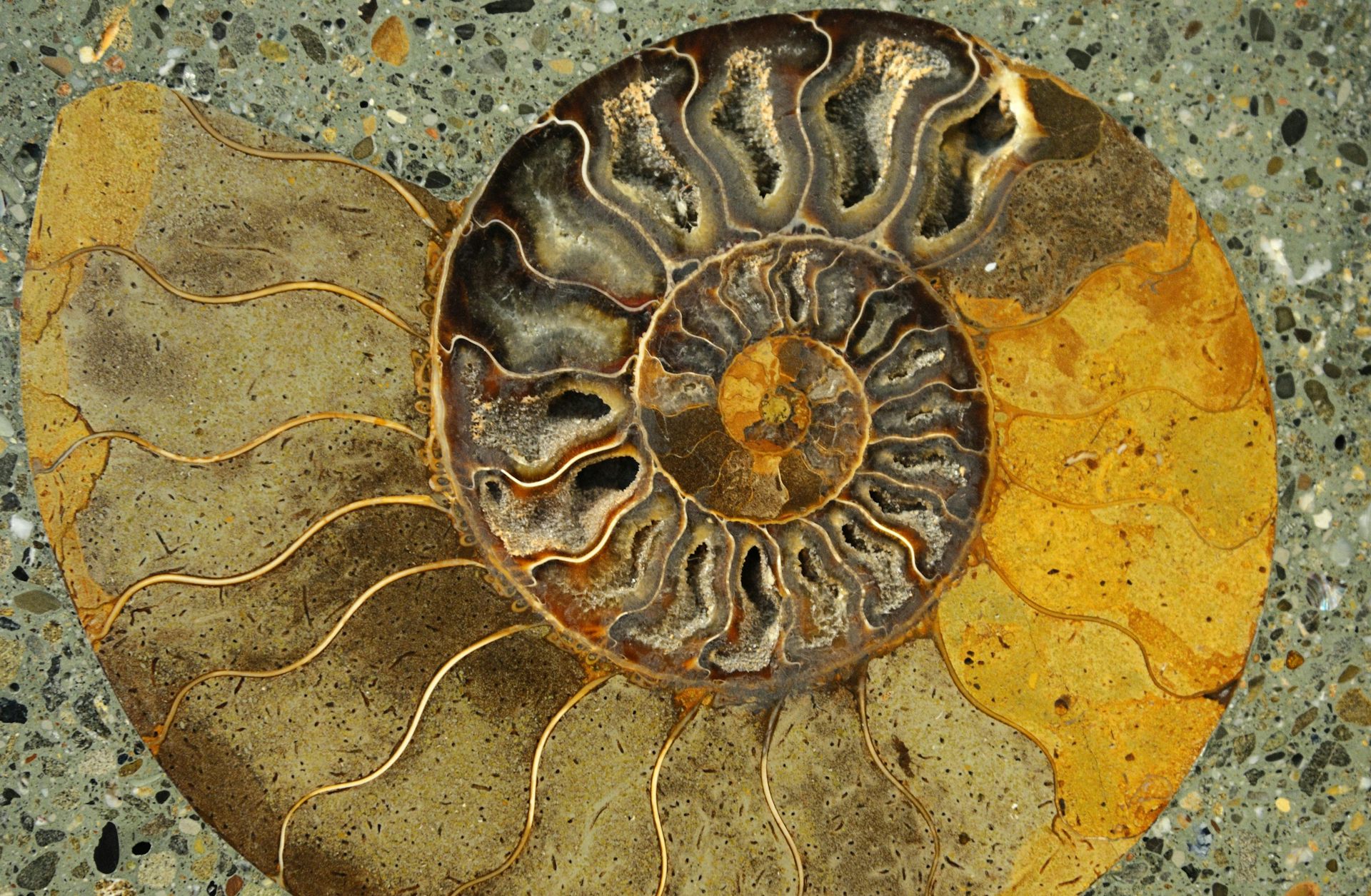
You’d struggle to tell an ancient Nautilus from a living one.
The goblin shark (Mitsukurina owstoni) is a bizarre animal with a long, flat snout and toothy jaws that protrude in front of the face to catch unsuspecting prey. It’s a relatively rare deep-water shark living in all major oceans. With a face only a mother could love, it was described as “grotesque” when first encountered in 1910.
The goblin shark is the only living representative of its family, Mitsukurinidae, and is the most evolutionarily distinct shark we know of; its lineage stretches back some 125 million years.

Goblin sharks are rarely seen by humans.
Dianne Bray/Museum Victoria, CC BY
Mantis shrimp, also called stomatopods, are distinctive crustaceans found in tropical and subtropical coastal waters around the world. They are fearsome marine carnivores known to deliver a dizzyingly fast and painful blow.
They also live a colourful life. During mating season they fluoresce (emit light) and have complex eyes to watch these displays. In fact, they have up to 16 colour receptors, whereas humans have just three.
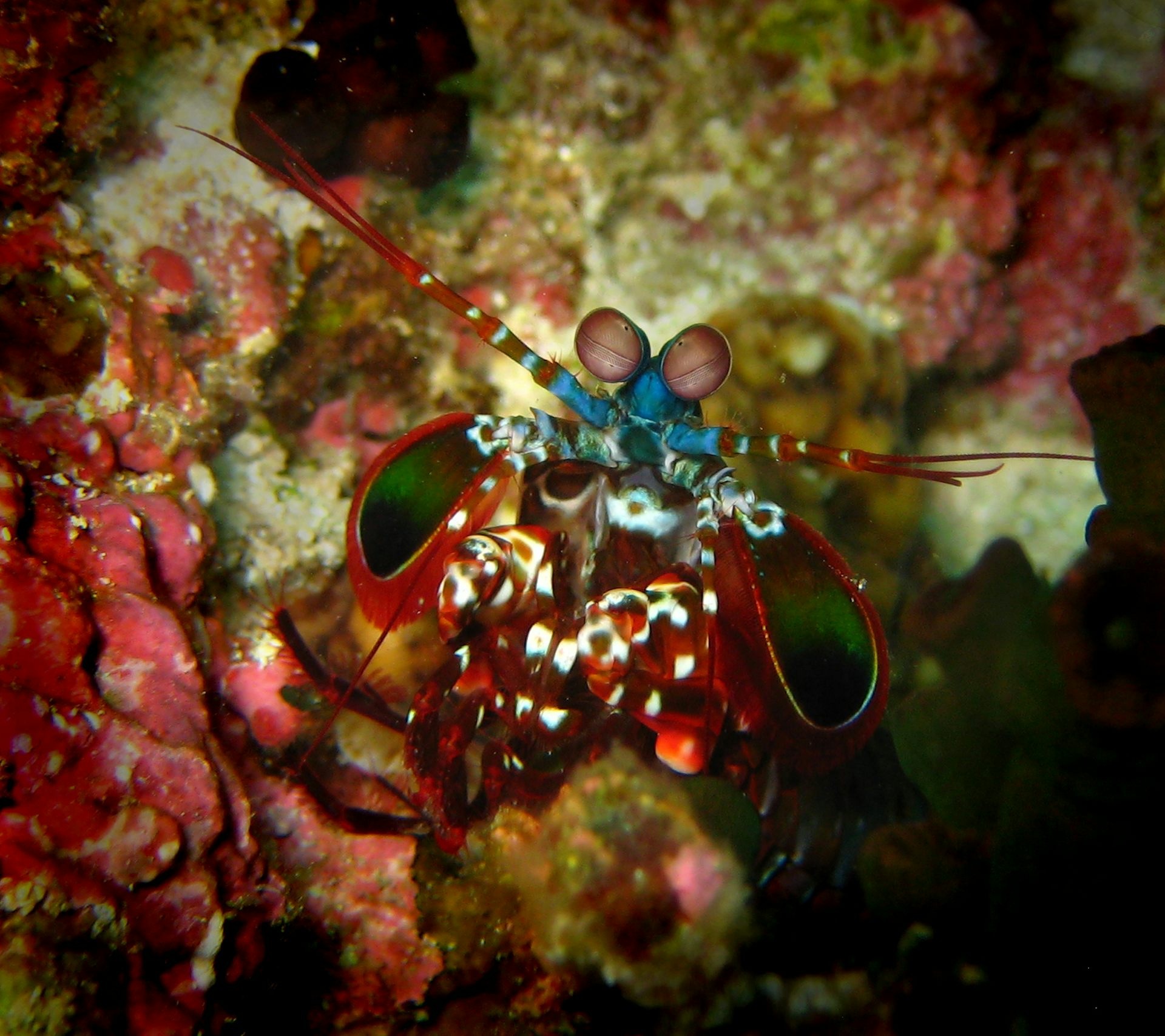
Mantis shrimp have the fastest self-powered strike in the animal kingdom.
PiktourUK
7. Striped panray
Many cartilaginous fish tend to be highly evolutionarily distinct, but taking out the top spot is the striped panray (Zanobatus schoenleinii). This fish has a median “evolutionary distinctiveness” age of 188 million years.
Today, the striped panray lives in tropical waters in the eastern Atlantic (and possibly the Indian) ocean, and feeds on small invertebrates from the ocean floor. It belongs to the order Rhinopristiformes and is ovoviviparous, meaning it gives birth to live young. It is listed as “vulnerable” by the International Union for Conservation of Nature.
8. Brachiopods
Brachiopods are shelly marine animals with long, fleshy stalks that live in burrows on the seafloor. They act as reef-dwelling organisms, filter-feeding from the water around them. Brachiopods living today, such as Lingula, look more or less the same as their Cambrian counterparts from about 500 million years ago! They are considered the oldest known animal (genus) that still contains living representatives.
In The Origin of Species, Darwin noted “some of the most ancient […] animals as […] Nautilus, Lingula, etc., do not differ much from living species”. It’s these observations that led him to propose the term “living fossil”.
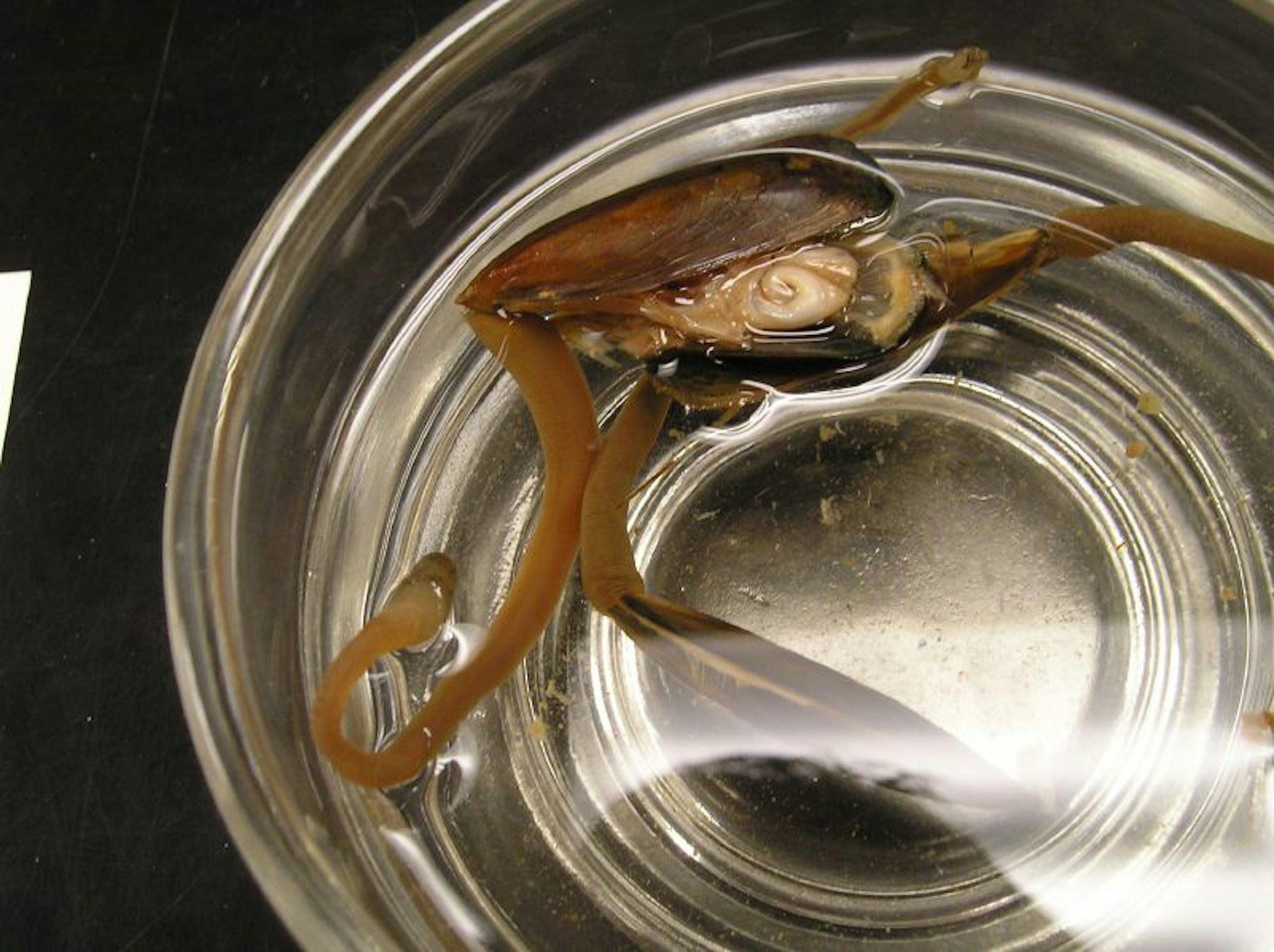
Brachiopods have hardly changed in hundreds of millions of years.
Rob Growler
Crinoids are known from at least the Devonian (359-419 million years ago) but may have existed as long ago as the Ordovician (more than 445 million). These marine animals, also known as “sea lilies”, once lived on the seafloor in a symbiotic relationship with corals. Corals grew off the stalks of crinoids to reach higher into the water column for better feeding opportunities.
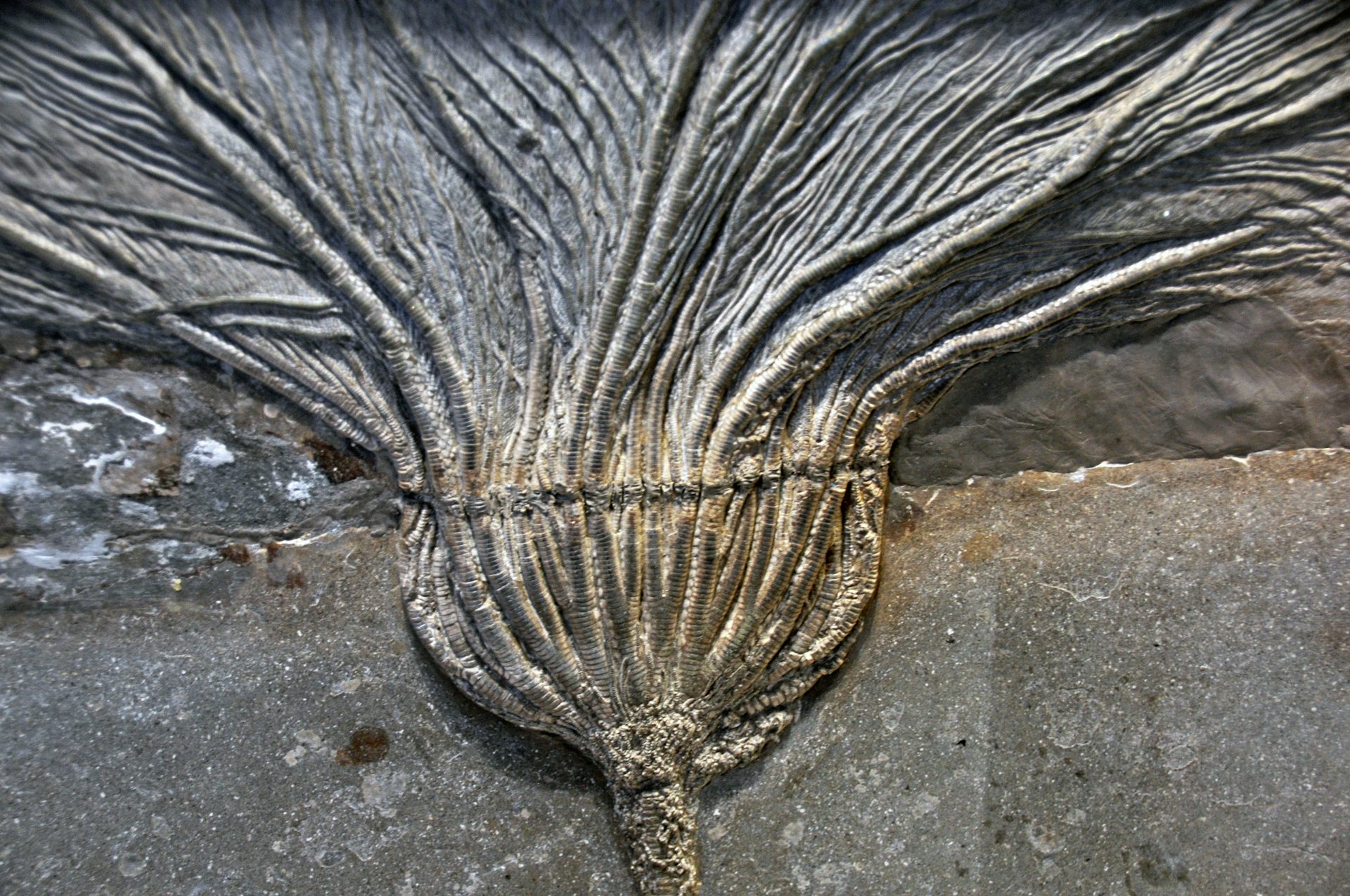
A fossil crinoid species called Seirocrinus subangularis.
James St. John
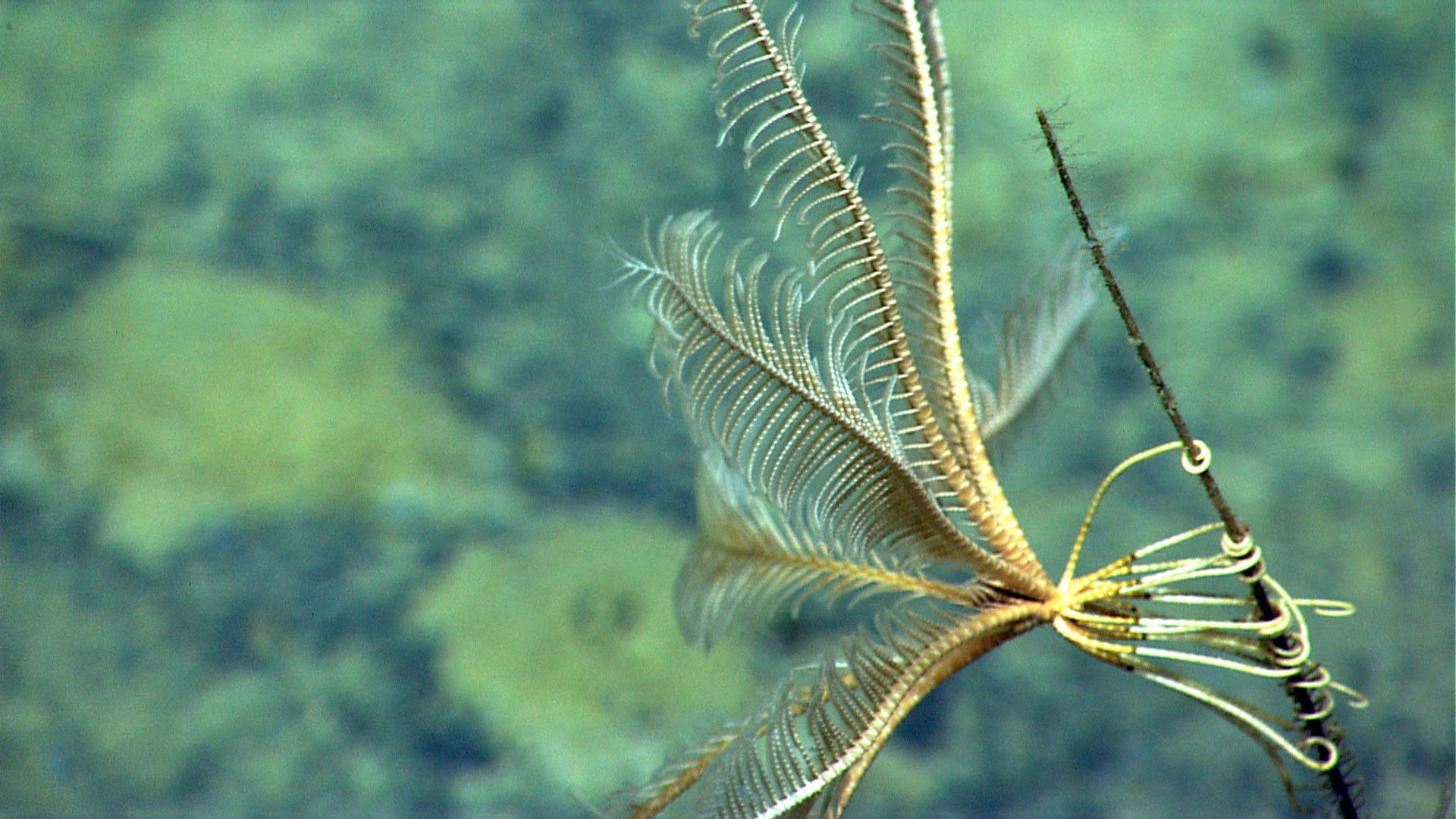
Crinoids were thought to be extinct until 2021.
NOAA Ocean Exploration and Research
While animals described as “living fossils” usually do continue to evolve, many of these changes are imperceptible to the human eye. To track how animals change over time, we look at molecular changes visible in the genes, or “morphological” changes to the physical form.
Internal (or molecular) drivers include genetic drift, which is the random change in the frequency of gene variants in a population over time. External forces include natural selection, in particular sexual selection, which lead to specific traits being inherited in a population over time.
All the marine animals in this list seem to be undergoing morphological stasis (slowing or stoppage). Some may have molecular stasis too. Their slowing rates of evolution are likely a result of the relatively stable environment underwater, particularly in the deep sea. These distant refuges are some of the least affected by direct human impacts and changes in weather and climate.
Then again, these animals are not immune. And if we’re not careful, we may lose some of these curious creatures forever.
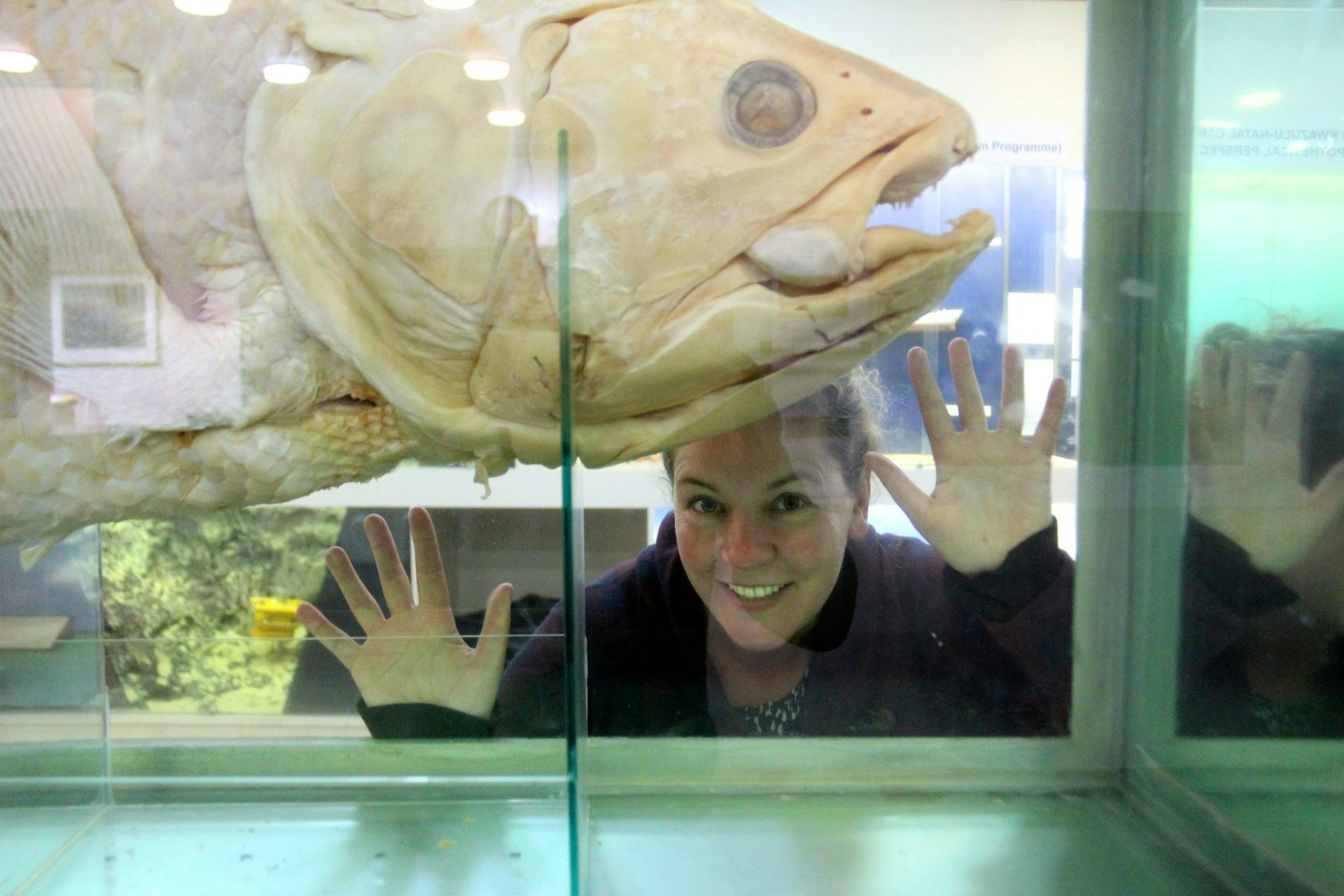
A Latimeria (coelacanth) specimen at the South African Institute for Aquatic Biodiversity, and an excited human.
Alice Clement, Research Associate in the College of Science and Engineering, Flinders University
This article is republished from The Conversation under a Creative Commons license. Read the original article.
As I said in my article about coelacanths, these gaps and prolonged periods of stasis are only a problem for gullible fools conditioned to believe that the Theory of Evolution requires regular change and a complete fossil record.
It says nothing of the sort, of course, but even if it did, there is little or no evidence that these examples have remained genetically unchanged for millions of tears, since genetic change is not always reflected in gross morphological change. Indeed, the fact that there are sometimes several distinct species, as with the horseshoe crabs, is an indication that the genus was subject to evolutionary biodiversity.
What is an even bigger problem for creationists though is that they've been fooled into thinking the 'fact' that a few species show little sign of evolution for tens or hundreds of millions of years is consistent with believing Earth is just a few thousand years old, so displaying to the world the limited intellectual abilities of those who fall for the childish cult of creationism.
What Makes You So Special? From The Big Bang To You
How did you come to be here, now? This books takes you from the Big Bang to the evolution of modern humans and the history of human cultures, showing that science is an adventure of discovery and a source of limitless wonder, giving us richer and more rewarding appreciation of the phenomenal privilege of merely being alive and able to begin to understand it all.
Available in Hardcover, Paperback or ebook for Kindle
Ten Reasons To Lose Faith: And Why You Are Better Off Without It
This book explains why faith is a fallacy and serves no useful purpose other than providing an excuse for pretending to know things that are unknown. It also explains how losing faith liberates former sufferers from fear, delusion and the control of others, freeing them to see the world in a different light, to recognise the injustices that religions cause and to accept people for who they are, not which group they happened to be born in. A society based on atheist, Humanist principles would be a less divided, more inclusive, more peaceful society and one more appreciative of the one opportunity that life gives us to enjoy and wonder at the world we live in.
Available in Hardcover, Paperback or ebook for Kindle

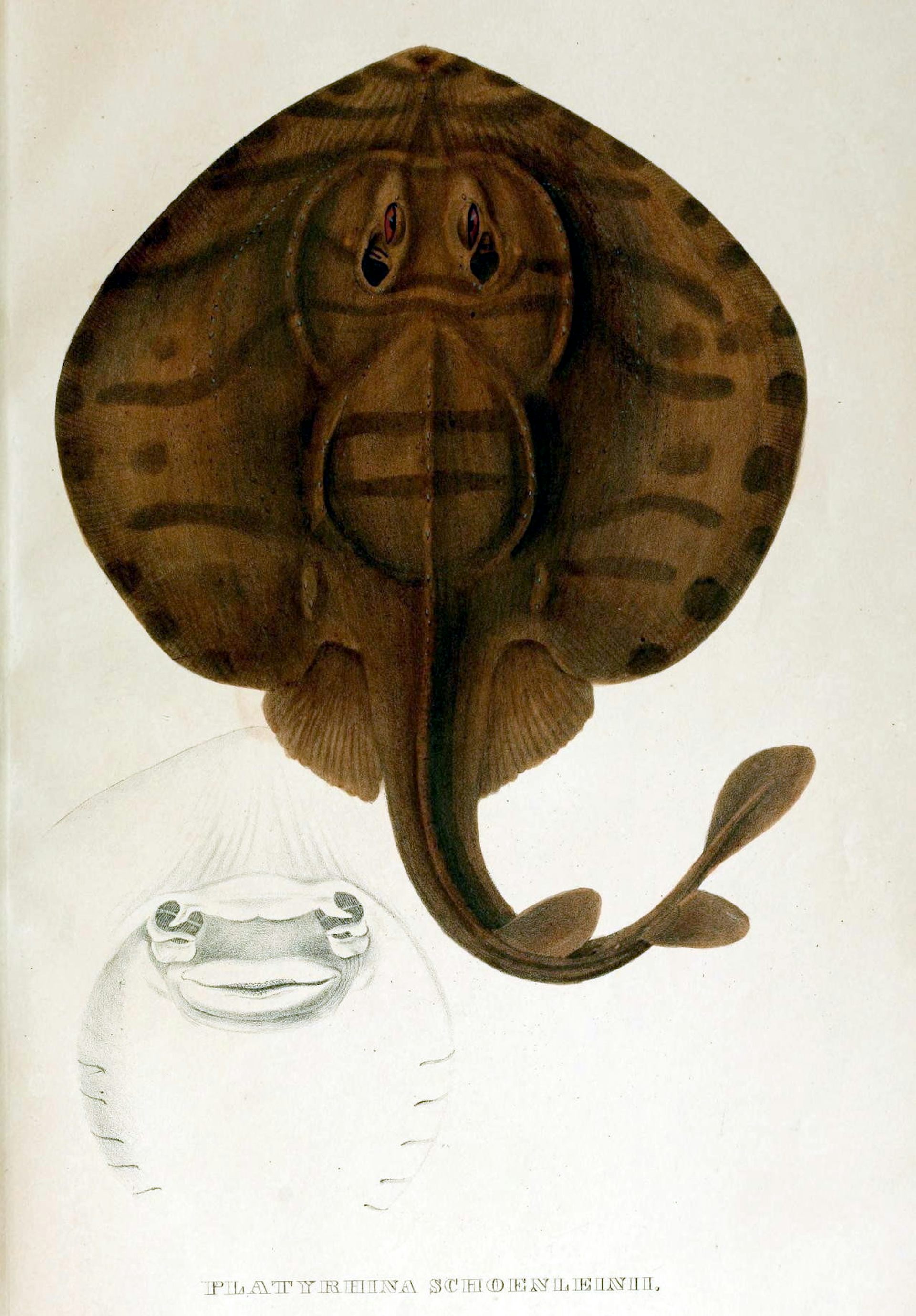




I knew of Coelacanth and the horseshoe crab, but learned about all the others ! Nifty article.
ReplyDelete